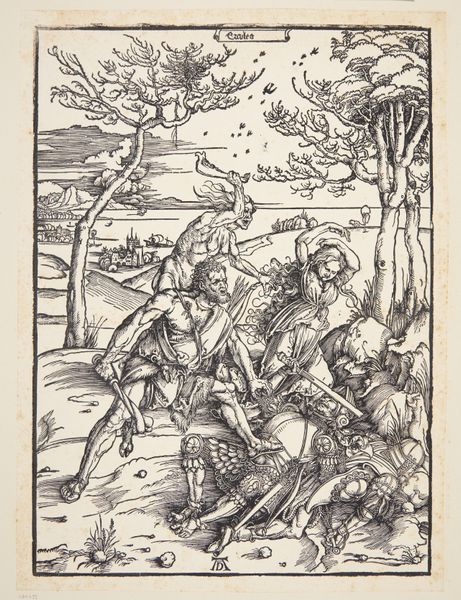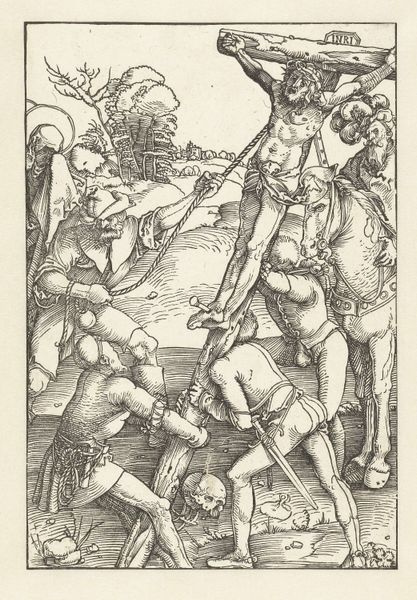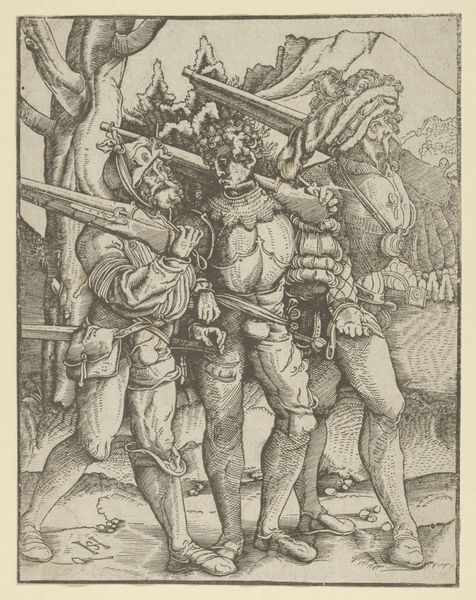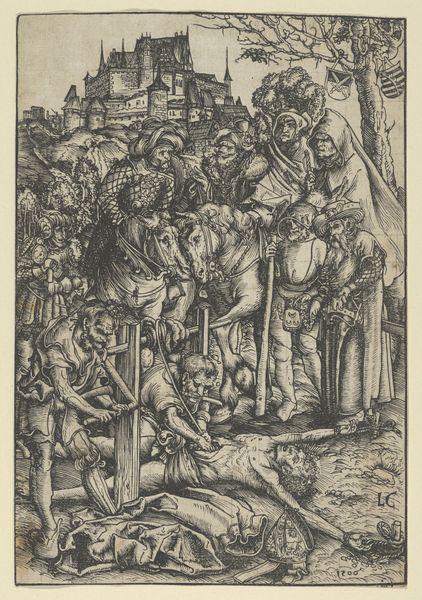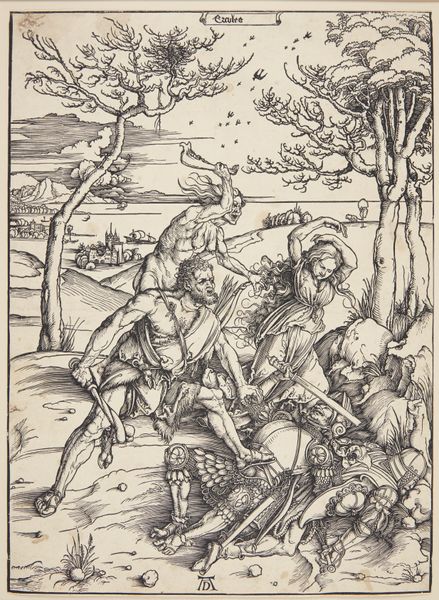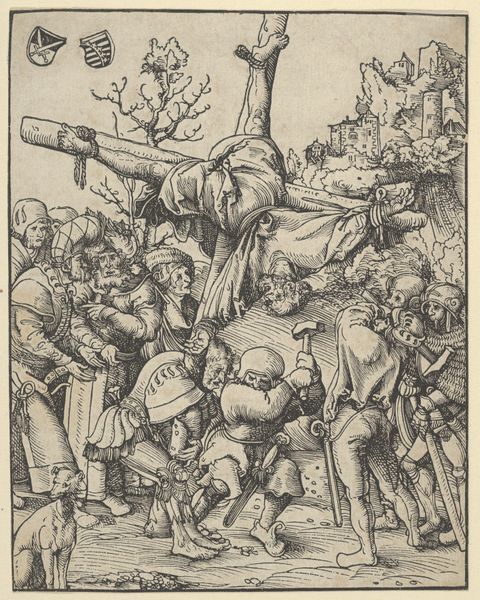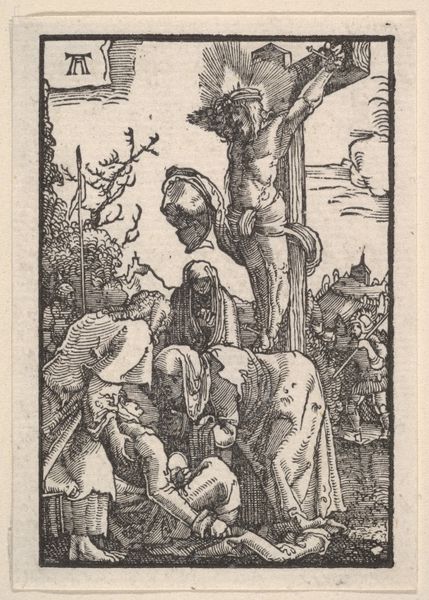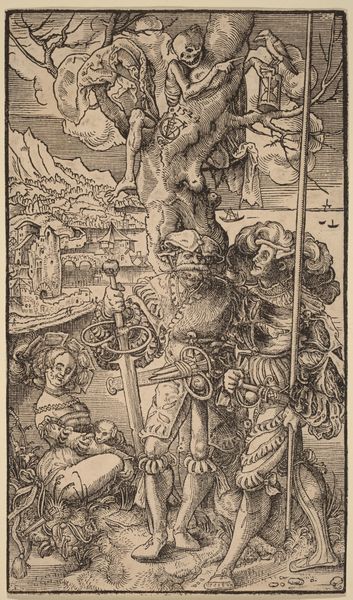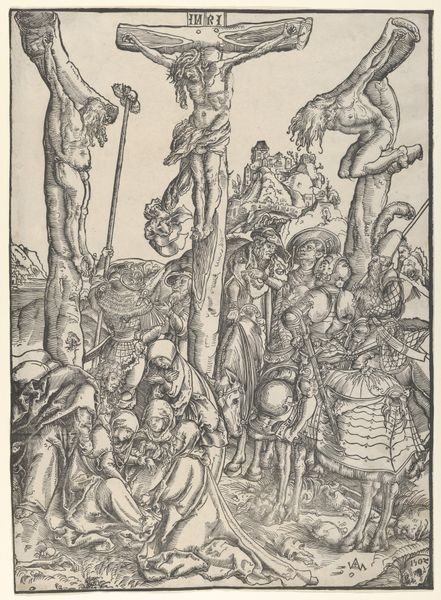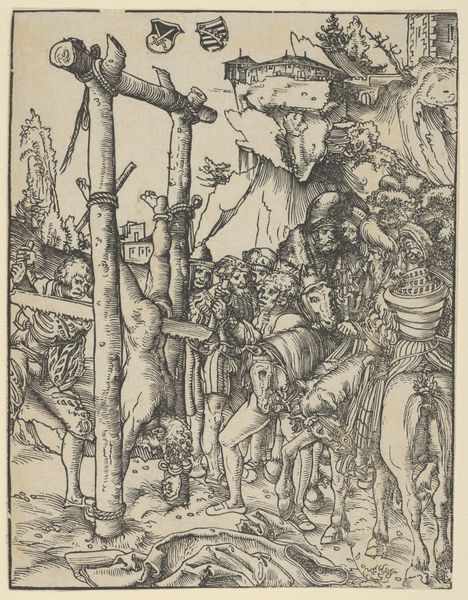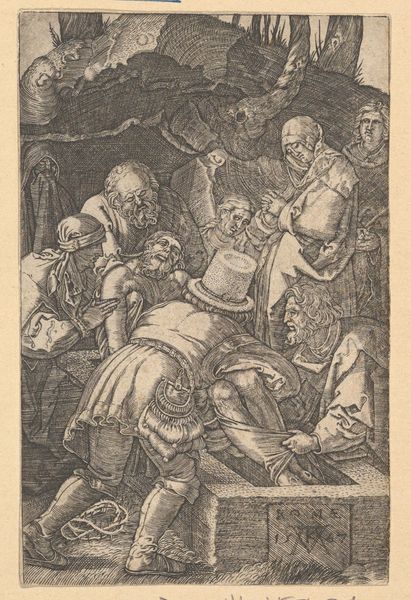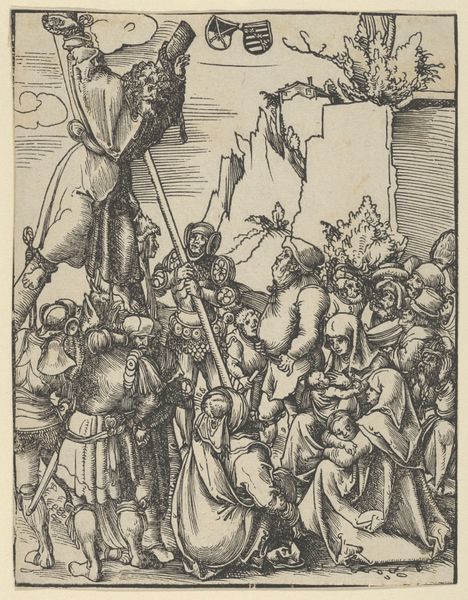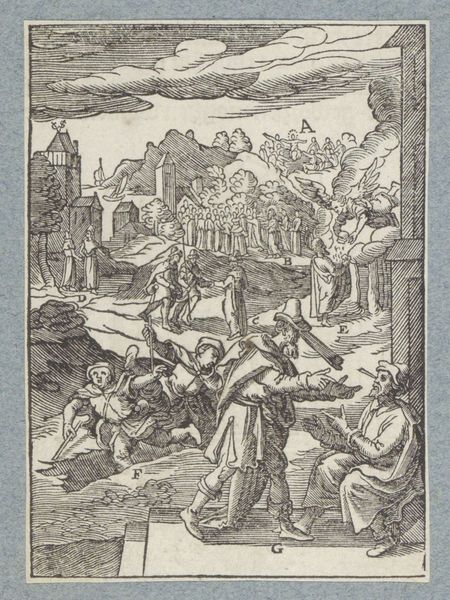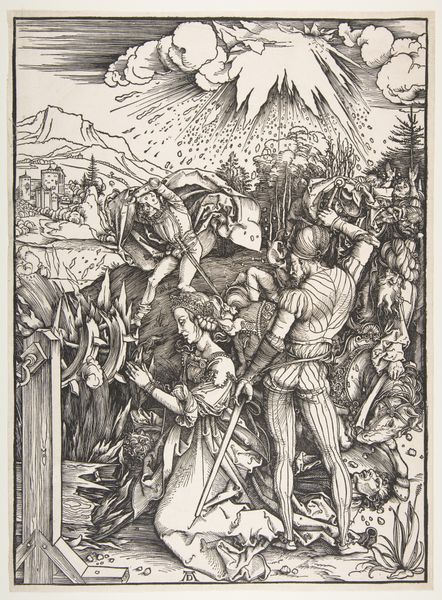
Christ Nailed to the Cross; verso: Christ Nailed to the Cross, from Speculum Passionis Domini Nostri Ihesu Christi 1507
0:00
0:00
drawing, print, woodcut
#
drawing
# print
#
figuration
#
woodcut
#
crucifixion
#
history-painting
#
northern-renaissance
#
christ
Dimensions: Sheet: 9 7/16 × 6 5/16 in. (23.9 × 16 cm)
Copyright: Public Domain
Curator: Here we have Hans Baldung's "Christ Nailed to the Cross," a woodcut created around 1507, now residing here at The Met. Editor: My gut reaction? Brutal. The scene is so immediate, so raw. You can almost feel the hammer blows. It's chaos and focused violence, all packed into this tight space. Curator: The image certainly reflects the anxieties of the time. It was produced during the early Renaissance in Northern Europe, a period marked by religious fervor and, frankly, a preoccupation with death and suffering. Prints like these, readily available, were used for private devotion and meditation, vividly depicting the Passion. Editor: Meditation? More like a full-on confrontation! Look at the contorted bodies, the exaggerated gestures. The torturers are rendered with grotesque intensity. There is not just drama but, theatrics even—as if it's staging a deep-seated primal rage. Curator: True, Baldung departs from idealized depictions of Christ. Here, he presents Jesus in a far more human, vulnerable light. Yet, his treatment, although harsh, speaks to the reformers of his time like Martin Luther or Huldrych Zwingli. The artist draws heavily on older tropes of the faith while moving to more of a "what you see is what is true" mode of communicating. It's as much about realism as it is about making it plain and accessible to the working folk. Editor: Accessible and jarring! Those faces in the crowd on the left, some are mournful, others are…blank, almost voyeuristic. It's that banality of evil that gets me. Even the landscape seems to shrink away, like it's repulsed by the scene. But do not mistake what is meant to be moving in Baldung's art, the violence meant to point a direct pathway to redemption. Curator: Indeed. It's a potent and emotionally charged work. I'd say, it captures not only the physical torment but the psychological weight of the crucifixion, reflecting a period of great societal upheaval. Editor: Leaving me with more questions than answers. But maybe that's the point, eh? A mirror reflecting humanity's darkness and its hope for light, no easy answers here.
Comments
No comments
Be the first to comment and join the conversation on the ultimate creative platform.
